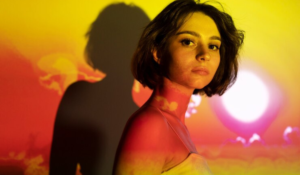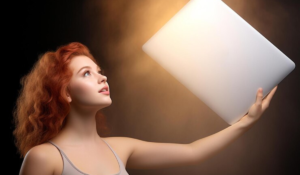A Comprehensive Guide to Studio Lights in Photography

The introduction:
Photography relies heavily on studio lighting, which allows photographers to be more creative and control their shots than natural light. You can enhance the quality of your portraits and product shots by understanding the different types of studio lights and how to use them. This guide explores studio lighting basics, types of artificial lighting, how to set up studio lights, and tips for achieving high-quality results.
Studio lighting has the following advantages:
Photographers have complete control over studio lighting, allowing them to control exposure and illuminate their subjects in a more creative manner. Unlike natural light, which varies unpredictably, studio lights offer consistency and reliability, making them ideal for professional photography.
Artificial lighting can be classified into the following types:
-
Lighting that is continuous:
-
Suitable for both photography and videography, it provides continuous illumination.
-
There are fluorescent lights, LED lights, and tungsten lights to choose from, each with its own advantages and disadvantages.
-
Real-time feedback makes it ideal for beginners.
-
-
Using speedlights:
-
Speedlights are portable and versatile devices that flash only when a picture is taken by the camera.
-
Adjustable power settings and compatibility with light modifiers make it suitable for a variety of shoots.
-
Lack of a modeling lamp to preview lighting effects.
-
-
Flash strobes and monolights:
-
Flash units that produce intense light for a short period of time.
-
Portability and variable power settings make it ideal for studio photography.
-
While monolights provide a modeling light for previewing shots, flash strobes deliver powerful output.
-
Lighting a studio:
-
It is possible to achieve various effects with different lighting setups, including one-light and two-light setups.
-
A detailed explanation is provided of common lighting techniques such as the classic 45-degree light, side lighting, butterfly lighting, and backlighting.
-
To develop a unique style, experiment with different setups and modifiers.
High-Quality Portrait Tips:
-
Portraits can be captured more compellingly if you choose the right lens and experiment with shooting angles.
-
Single-point focus ensures sharpness and focus on key elements.
-
If you want to have better post-processing flexibility and control over image adjustments, shoot in RAW format.
-
Whatever the subject matter, tailor your lighting setup accordingly.
In conclusion:
Bringing a photographer’s artistic vision to life is possible thanks to studio lighting, which allows them to have unparalleled control and creativity. By understanding studio lighting basics, exploring artificial light types, and mastering lighting setups, photographers can elevate their skills and produce stunning images across various genres. Studio photography offers endless possibilities with the right knowledge and equipment.



